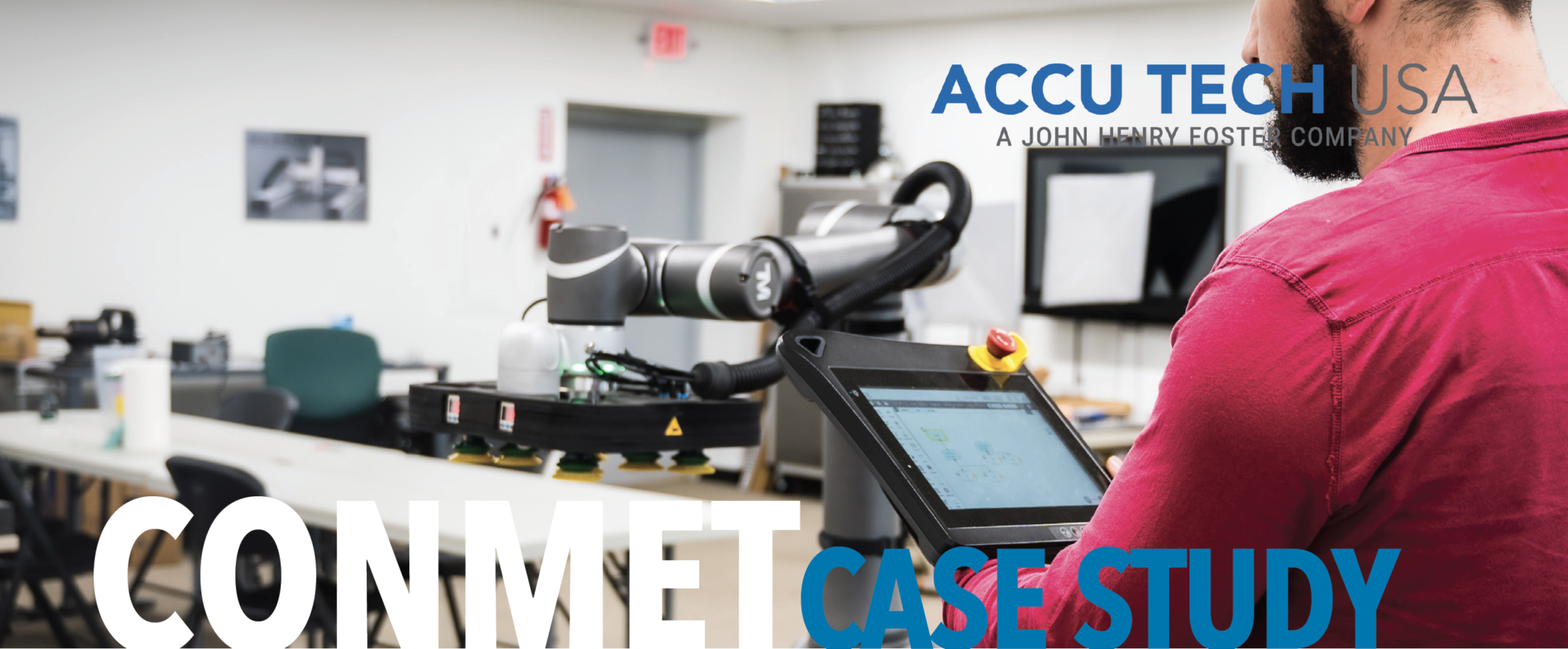THE OVERVIEW
Converting a manual assembly process to a collaborative work cell can seem overwhelming, time consuming and expensive. In many cases, as with Consolidated Metco (ConMet), space is limited and employee safety has to be the first priority. With the increase of collaborative robots being used in assembly applications, there is now a clear path forward to automating the assembly process.
THE APPROACH
ConMet was exploring automating their Volvo truck engine cover assembly process, which required fitting a thermal blanket and inserting automotive clips to the injection molded engine cover as it came off the press. Their requirements were the robot had to tie into the existing control system and operate within the existing workspace. The solution also had to be safe to operate around assemblers and reduce cycle time.
THE SOLUTION
Accu Tech USA engineers replicated the work space footprint in their office, using the Techman cobot, to prove the design concept. The team then leveraged their relationship with Schunk to test potential gripper solutions in their Co-Lab to determine the best gripper for the application.
THE CONCLUSION
The Techman and Schunk system met all the customer’s requirements, fit within their existing footprint, and was implemented into their facility. In addition, the new work cell improves speed, reliability and traceability for the process, all while being safe to operate around the assembly team.
As a result, ConMet has shifted this assembly process from a manual assembly to an automated work cell and is currently evaluating how to automate other assemblies for future projects.

